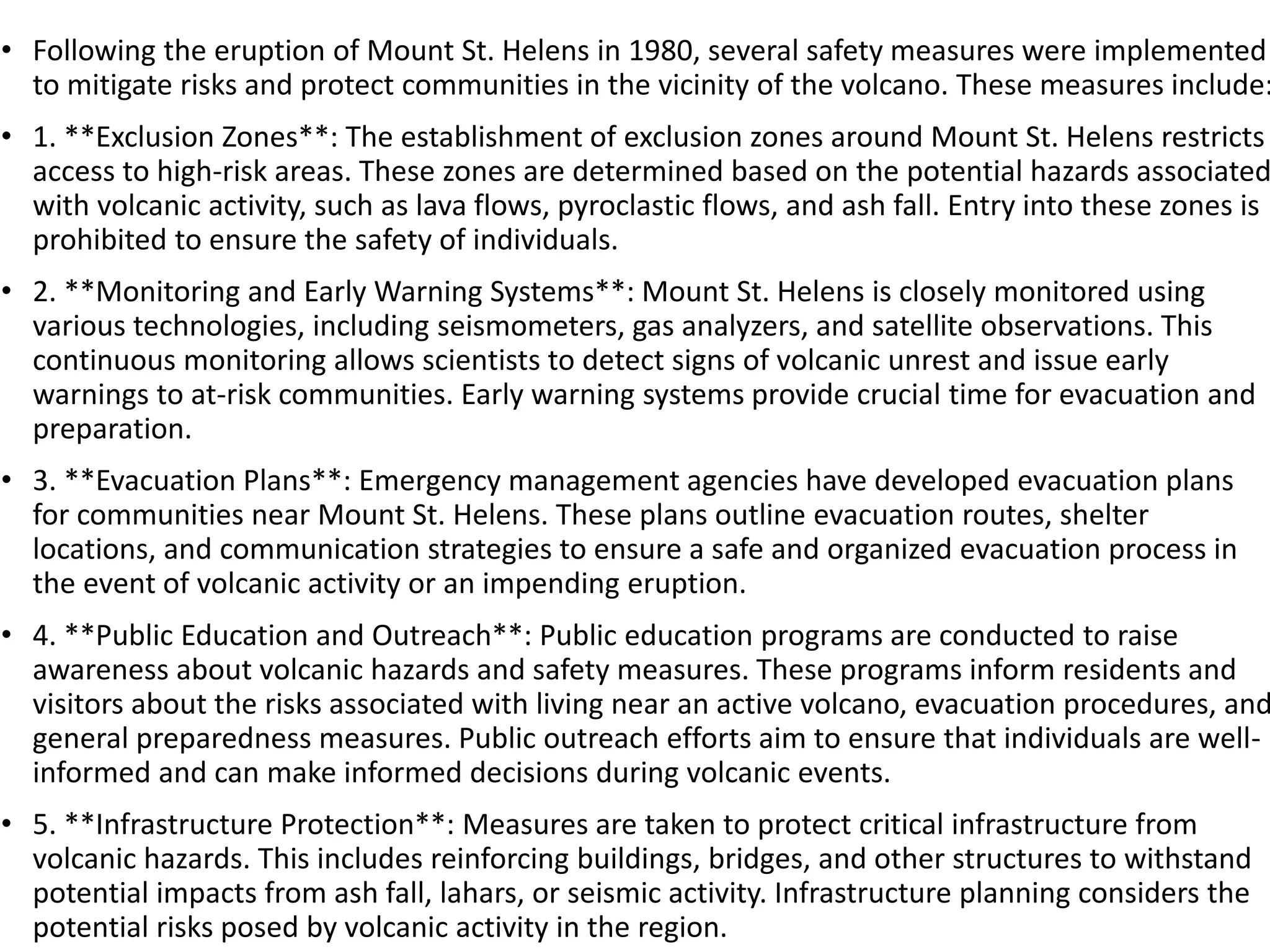The journal entry describes observations of Mount St. Helens, located in Washington state. It notes that Mount St. Helens is a stratovolcano characterized by its steep conical shape prior to the 1980 eruption, which left a large crater on its north side and drastically altered its appearance. Minor seismic activity has been detected at the volcano, indicating movement of magma beneath the surface. Continued monitoring is important to assess volcanic conditions and mitigate potential hazards.










